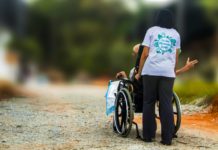
More people quit smoking or lose weight when they know their own genetic propensities to diseases
Not everyone is Angelina Jolie, with access to cutting age genomic analysis and the ability to take dramatic health decisions based on that.
However access to personal genomic information can have a major, long-term effect on their lifestyle, researchers have found. The Finnish GeneRISK study, providing information on the risk of cardiovascular disease (CVD) based on their genome and traditional risk factors to 7,328 people inspired changes for the better. There was more effort on the part of subjects in areas such as weight loss and smoking cessation. Nearly 90% of them said the information had made them take better care of their health, researchers told the annual conference of the European Society of Human Genetics.
Hollywood star Jolie had caused a ripple some years back when she underwent bilateral mastectomy to beat a genetic predisposition to breast cancer – a disease she had lost her mother to.
There are however many other common diseases where genetic factors play more than a starring role. But there is little use currently of using this information at the individual level for preventive purposes.
That is why Elisabeth Widen, MD, a senior scientist at the Institute for Molecular Medicine, University of Helsinki, Finland, and colleagues have developed a web-based tool. The tool allows patients and doctors to see and manage genomic information based on 49,000 disease-associated genetic variants and lifestyle-associated risk factors.
Empowering individuals by giving information on their personal risk of disease, as opposed to something more generalised, is clearly effective
Delivering the results of the tool KardioKompassi® directly to patients, they were able to see their 10-year risk for ischemic heart disease. The tool combines risk information based on traditional risk factors such as age, sex, cholesterol levels and blood pressure with a polygenic risk score.
Where a patient’s overall disease risk was elevated, KardioKompassi advised the participant to contact their doctor in order to discuss how best to reduce it.
When reassessed eighteen months later, the results were impressive. Compared with a 4% smoking cessation rate in the general population, 17% of smokers in the study had given up, and sustained weight loss had been achieved by 13.7% of participants. Overall, risk-reducing behaviour such as weight loss, giving up smoking, or visiting a doctor was 32.4% in those with a predicted CVD risk of more than 10% and 18.4% in those at lower risk.
“As many as 40% of participants with a high risk of CVD were smokers at the start of the study, so these results are encouraging. We believe that giving information on their genetic profile to individuals is particularly motivating, perhaps simply because it is new information. For example, many of the participants already knew that they had high levels of cholesterol. But it was receiving information on their personal genetic risk that triggered changes,”Dr Widen says.
The general trend towards patient participation is particularly important in disease prevention, say the researchers. Empowering individuals by giving information on their personal risk of disease, as opposed to something more generalised, is clearly effective in encouraging them to follow healthier lifestyles.













